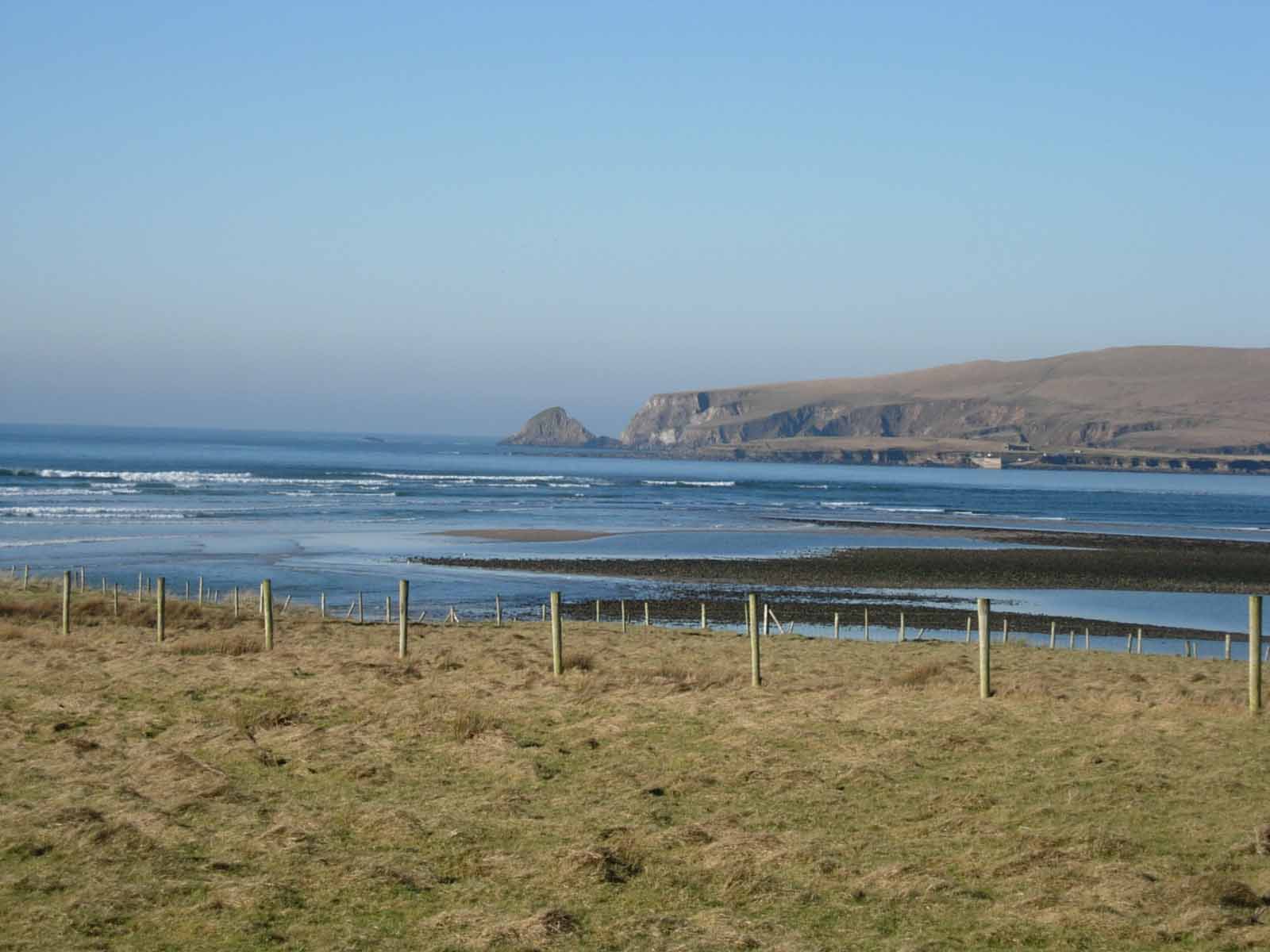 Spirit of Freedom
Spirit of Freedom
(February 2008)
Produced by
EARTH LIBERATION PRISONERS SUPPORT NETWORK
“The whole experience has been tough, but all the kind and strengthening words and wise thoughts from strangers made it much easier!”
(Former Swedish Animal Rights Prisoner)
Welcome to the February 2008 edition of Spirit of Freedom. As we enter February so we await three major events. First off, Jeff ‘Free’ Luers is due to be re-sentenced. We hope its good news. Secondly, Eric McDavid is also due to be sentenced. As soon as Eric has been sentenced we urge everyone to send him letters of support. And thirdly, the police informant Jacob Ferguson is also due to be sentenced. His cowardly deals and treachery means he won’t be sent to prison. But we await with interest to see what sentence this piece of scum does receive. If anyone hears, please do let ELP know. But whilst we await those three sentencings, please don’t forget all the other eco-prisoners. Remember, no matter where you are in the world, support the eco-prisoners and no compromise in defence of Mother Earth!
ECO-DEFENCE PRISONERS
Tre Arrow, CS# 05850722, Vancouver Island Regional Correction Center, 4216 Wilkinson Rd., Victoria, BC, V8Z 5B2, Canada. On remand accused of involvement with an arson on logging trucks and an arson on vehicles owned by a sand & gravel company. Both arsons occurred in the USA. Tre is fighting his extradition to the USA.
Grant Barnes #137563, San Carlos Correctional Facility, PO Box 3, Pueblo, CO 81002, USA. Serving 12 years for setting fire to a number of SUV vehicles. On one of the vehicles the letters ELF was spray-painted.
Nathan Block, #36359-086, FCI Lompoc, Federal Correctional Institution, 3600 Guard Road, Lompoc, CA 93436, USA. Serving 7 years & 8 months for an ELF arson against a Poplar Tree Farm and an ELF arson against an SUV dealership. Also admitted his role in an ELF/ALF conspiracy.
Marco Camenisch, Postfach 3143, CH-8105 Regensdorf, Switzerland. Serving 18 years. 1) Ten years for using explosives to destroy electricity pylons leading from nuclear power stations. 2) Eight years for the murder of a Swiss Boarder Guard whilst on the run. In ’02 Marco completed a 12-year sentence in Italy for destroying electricity pylons in Italy.
Rod Coronado – See details in Animal Liberation Prisoners List.
Ibai Ederra, Carcel de Pamplona, C/San Roque. Apdo. 250, 31080 – Iruñez – Pamplona, Navarra (España), Spain. Serving just under 5 years for sabotaging machinery at the controversial Itoiz dam construction site.
Jeffrey Luers, #1306729, Lane County Adult Corrections, 101 West 5th Ave, Eugene, OR 97401-2695, USA. Awaiting resentencing. Originally sentenced to 22 years & 8 months for arson on a SUV dealership & the attempted arson of an oil truck.
Eric McDavid X-2972521 4E 231A, Sacramento County Main Jail, 651 “I” Street, Sacramento, CA 95814, USA. Awaiting sentencing having been found guilty of planning to destroy the property of the U.S. Forestry Service, mobile phone masts and power plants.
Daniel McGowan #63794-053, Unit I, FCI Sandstone, Federal Correctional Institution, PO Box 1000, Sandstone, MN 55072, USA. Serving 7 years for an ELF arson against a Poplar Tree Farm and an ELF arson against an old growth logging corporation. Also admitted his role in an ELF/ALF conspiracy.
Christopher McIntosh #30512-013, FCI Fairton, PO Box 420, Fairton, NJ 08320, USA. Serving 8 years for setting fire to a McDonald’s restaurant.
Jonathan Paul – See details in Animal Liberation Prisoners List.
Costantino Ragusa, Casa Circondariale, Via Prati Nuovi 7, 27058 Voghera (PV), Italy. Il Silvestre activist serving 2½ years. 1) 18-months for burgling and firebombing a multinational company. 2) 12-months for organising an anti-GM protest. Costanino is also awaiting trial accused of using explosives to damage an electricity pylon in protest at nuclear energy.
Julio Villanueva, C.P. Prision De Pamplona, 31080, Iruna (Navarra), Spain.
Serving just under 5 years for sabotaging machinery at the controversial Itoiz dam construction site.
Joyanna Zacher, #36360-086, FCI Dublin, 5700 8th St.- Camp Parks- Unit F, Dublin, CA 94568, USA. Serving 7 years & 8 months for an ELF arson against a Poplar Tree Farm and an ELF arson against an SUV dealership. Also admitted her role in an ELF/ALF conspiracy.
ANIMAL LIBERATION PRISONERS
Jon Ablewhite TB4885, HMP Lowdham Grange, Lowdham, Nottingham, NG14 7DA, England. Serving 12 years for attempting to blackmail a farmer who supplied guinea pigs for vivisection.
Gregg Avery TA7450, HMP Winchester, Romsey Road, Winchester, SO22 5DF, England. On remand accused of conspiracy to blackmail, in relation to his involvement with the SHAC campaign.
Natasha Avery NR8987, HMP Bronzefield, Woodthorpe Road, Ashford, Middx. TW15 3JZ, England. Jailed for breaching her parole conditions imposed on her for telling a fox hunting murdering scum what she thought of them. Also awaiting trial accused of conspiracy to blackmail, in relation to her involvement with the SHAC campaign.
Nathan Block – See details in Eco Defence Prisoners List.
Mel Broughton TN9138, HMP Woodhill, Tattenhoe Street, Milton Keynes, Bucks MK4 4DA, England. On remand accused of involvement with an arson and blackmail campaign against an Oxford University vivisection establishment.
Jacob Conroy #93501-011, FCI Victorville Medium I Federal Correctional Institution, P.O. Box 5300, Adelanto, CA 92301, USA. Serving 48 months imprisonment for helping organise the SHAC-USA campaign.
Rod Coronado, Voice of the Earth, PO Box 732, Tucson, AZ 85702, USA. Due to be sentenced to one-year imprisonment after Rod informed people how to make an incendiary device during a speech at an animal rights gathering.
Donald Currie A3660AA, HMP Parkhurst, Newport, Isle of Wight, PO30 5NX, England. Serving an Indeterminate Sentence, of not less than six actual years, for carrying out arsons against targets associated the vivisection industry including HLS.
Lauren Gazzola #93497-011, FCI Danbury, Federal Correctional Institution, Route #37Danbury, CT 06811, USA. Serving 54 months imprisonment for helping organise the SHAC-USA campaign.
Sarah Gisborne, LT5393, HMP Downview, Sutton Lane, Sutton, Surrey, SM2 5PD, England. Serving 5½ years for conspiracy to cause criminal damage following the damaging of 8 vehicles owned by people linked to Huntingdon Life Science.
Joshua Harper #29429-086, FCI Sheridan Federal Correctional Institution, P.O. Box 5000, Sheridan, OR 97378 USA. Serving 36 months imprisonment for helping organise the SHAC-USA campaign.
Kevin Kjonaas #93502-011, FCI Sandstone, PO Box 1000, Sandstone, MN 55072 USA. Serving 72 months imprisonment for helping organise the SHAC-USA campaign.
Daniel McGowan – See details in Eco Defence Prisoners List.
Heather Nicholson VM4859, HMP Bronzefield, Woodthorpe Road, Ashford, Middx. TW15 3JZ, England. On remand accused of conspiracy to blackmail, in relation to her involvement with the SHAC campaign.
Jonathan Paul, #07167-085, FCI Phoenix, Federal Correctional Institution, 37910 N 45th Ave., Phoenix, AZ 85086, USA. Sentenced to 51 months for an ALF arson on a horse meat plant. Also admitted his role in an ELF/ALF conspiracy.
John Smith TB4887, HMP Lowdham Grange, Lowdham, Nottingham, NG14 7DA, England. Serving 12 years for attempting to blackmail a farmer who supplied guinea pigs for vivisection.
Andrew Stepanian #26399-050, FCI Butner Medium II Federal Correctional Institution, PO Box 1500, Butner, NC 27509 USA. Serving 36 months for helping organise the SHAC-USA campaign.
Kerry Whitburn TB4886, HMP Lowdham Grange, Lowdham, Nottingham, NG14 7DA, England. Serving 12 years for attempting to blackmail a farmer who supplied guinea pigs for vivisection.
Joyanna Zacher – See details in Eco Defence Prisoners List.
PLOUGHSHARES PRISONERS
Helen Woodson, 03231-045, FMC Carswell – Admin. Max. Unit, POB 27137, Ft. Worth, TX 76127, USA. Serving 8 years 10 months for actions that focused on the interrelationship of war & the destruction of the natural world. The actions included pouring red paint over the security desk of a federal court and making threatening communications. Previously Helen had served 20½ years for: 1) Using a hammer to disarm a nuclear missile silo. 2) Burning $25,000 on the floor of a bank whilst denouncing war, environmental destruction & economic injustice. 3) Mailing warning letters with bullets attached to Government & corporate officials.
THE LECCE FIVE
The Lecce Five have been charged with “subversive association” accused of damaging Esso petrol pumps to oppose the War on Iraq; sabotaging the cash machines of a bank which funds an immigration centre; and targeting the multinational company Benetton in support of Mapuche land rights activists in Chile. All of the defendants are currently either under house arrest or released on bail.
ANTIFA PRISONERS
Lasandra Burwell W063658, Ohio Reformatory for Women, 1479 Collins Ave. Marysville, OH 43040, USA. Serving 5 years for taking part in an anti-fascist demonstration that turned into a riot.
Vahtang Devitlidze, ul. Libbedova 42, UO 68/2, otryad 14, brigada 142, g. Hagyshensk, Krasnodarskiy Kray, 352680 Russia. Serving 2½ years for stabbing a neo-nazi in the leg whilst defending himself from attack.
Augustin Kraus, Vazebni veznice, PP-1, Litomerice, 41 201, Czech Republic.
Serving 14 months for his participation in attacks against local neo-nazis. His charge was “bodily harm”. He speaks Czech, Slovak and Polish. You can also write him short postcards in English.
Gubski Maxim, VK-2 – 21, Batowa str. 4, Bobruisk, 213800 Belarus. Serving 3 years for fighting with neo-nazis.
Vladislav Vladimirovich Plyashkevich, IK-10 otryad 4, Novopoltsk-5 Vitebskaya oblast, 211440 Belarus. Serving 3 years for fighting with neo-nazis.
Christian Sümmermann, BNR: 727/07/7, JVA Tegel, Seidelstr. 39, 13507 Berlin, Germany. Serving 40 months for breaching the peace whilst serving a suspended sentence issued for anti-fascist activities.
Tomasz Wiloszewski, Zaklad Karny, Orzechowa 5, 98-200 Sieradz, Poland.
Serving 15 years for accidentally killing a neo-nazi whilst defending himself.
OTHER PRISONERS
Oscar Santa Maria Caro, CERESO, Miahuatlan de Porfirio Diaz, Oaxaca en Hall B, Cell 5., Mexico. On remand. The exact charges against Oscar are unknown but Oscar is a member of RATA, a known animal rights group.
Sacramento Delfino Cano Hernandez, CERESO, Miahuatlan de Porfirio Diaz, Oaxaca en Hall B, Cell 5., Mexico. On remand. Co-defendant of Oscar Santa Maria Caro.
Olga Aleksandrovna Nevskaya, UU163/5, 7 Otryad, pos. Dzerzhinskiy, Mozhaysk 140090 Moskovskaya oblast, Russia. Eco-activist serving 6 years for arson, criminal damage and causing explosions in protest at the war in Chechnya. Due for release in 2009.
Fran Thompson, #1090915 HU 1C, WERDCC, PO Box 300, Vandalia, MO 63382, USA.
Serving Life for killing, in self-defence, a stalker who had broken into her home. Before her imprisonment Fran was an eco, animal & anti-nuke campaigner.
MOVE
MOVE is an eco-revolutionary group who carried out protests in defence of all life. There are currently eight MOVE activists in prison each serving 100 years after been framed for the murder of a cop in 1979. 9th defendant, Merle Africa, died in prison in 1998.
Debbie Simms Africa (006307), Janet Holloway Africa (006308) and Janine Philips Africa (006309) all at: SCI Cambridge Springs, 451 Fullerton Ave, Cambridge Springs, PA 16403-1238, USA.
Michael Davis Africa (AM4973) and Charles Simms Africa (AM4975) both at SCI Graterford, PO Box 244, Graterford, PA 19426-0244, USA.
Edward Goodman Africa (AM4974), SCI Mahanoy, 301 Morea Rd, Frackville, PA 17932, USA.
William Philips Africa (AM4984) and Delbert Orr Africa (AM4985) both at SCI Dallas Drawer K, Dallas, PA 18612, USA.
Mumia Abu Jamal, (AM8335), SCI Greene, 175 Progress Drive, Waynesburg PA 15370, USA. In 1981 Mumia, former Black Panther and vocal supporter of MOVE, was framed for the murder of a cop. He was originally sentenced to death but is currently awaiting re-sentencing following a court hearing in 2001.
STATEMENT ON VIOLENCE
Some people listed in this newsletter have carried out violent actions. ‘Spirit of Freedom’ does not condone violence. But we are also against censorship & believe people can decide for themselves who they wish to support.
ABOUT E.L.P. SUPPORT NETWORK
ELP is an international eco-prisoner support network founded, in Britain, in 1993 to support jailed eco-activists. We support the prisoners by producing various regular prisoner lists:
Spirit of Freedom is ELP’s international monthly prisoner listing which is circulated by e-mail.
Urgent ELP! Bulletin is an e-mail service that distributes the names of any new eco-prisoner as soon as ELP gets their details. For more info e-mail ELP4321@hotmail.com
On-Line Newsletters – ELP has a number of websites that provide news, prisoner lists and additional info about ELP & the prisoners.
English language ELP Website
www.spiritoffreedom.org.uk
North American ELP Website
www.ecoprisoners.org
Turkish language ELP Website
www.geocities.com/yesilanarsi/elp.htm
ELP Extra is an e-mail group that circulates the details of political prisoners, ELP learns about, who do not fall within the remit for support by ELP. To subscribe to the list e-mail ELP4321@Hotmail.com
Belgium ELP.SN is our Belgium contact. For more info e-mail elp_bel@hotmail.com
German ELP.SN is a prisoner led initiative run by eco-prisoner Marco Camenisch. For more info contact Marco Camenisch, Postfach 3143, CH-8105 Regensdorf, Switzerland.
North American ELP is our North American contact. For more information e-mail naelpsn@mutualaid.org
Turkey ELP.SN is our Turkish contact. For more info e-mail yesilanarsi@yahoo.com
 Whether you’ve been plotting for months or have just been inspired, there’s plenty of time left to plan your action. Read on for loads of resources and support…
Whether you’ve been plotting for months or have just been inspired, there’s plenty of time left to plan your action. Read on for loads of resources and support… 
 15.2.2008
15.2.2008 Join us for
Join us for 12 Noon February 14th, Kildare Street Dublin 2.
12 Noon February 14th, Kildare Street Dublin 2.
 Around 20 activists, some dressed as wolves in sheep’s clothing, visited the D1 Oil refinery in Bromborough on the Wirral, on 2nd February 2008. They were there to highlight the dangerous consequences of large-scale bio-fuel production for the climate and for people worldwide.
Around 20 activists, some dressed as wolves in sheep’s clothing, visited the D1 Oil refinery in Bromborough on the Wirral, on 2nd February 2008. They were there to highlight the dangerous consequences of large-scale bio-fuel production for the climate and for people worldwide. Spirit of Freedom
Spirit of Freedom Read all about occupations & lock-ons of big industrial places around the world, corporate & government blockades, squatting, airport invasions, subvertising, climate criminals locked & glued shut, trees climbed and chopped down, GM maize fields trashed, hunger strikes, burrowing under fences, jumping on whaling boats, Buying Nothing, Reclaiming the Streets and the unstoppable singing of Christmas songs, not to mention skating penguins. Even some upcoming dates to get stuck in or to meet other direct action crazies. We couldn’t make it up even if we tried.
Read all about occupations & lock-ons of big industrial places around the world, corporate & government blockades, squatting, airport invasions, subvertising, climate criminals locked & glued shut, trees climbed and chopped down, GM maize fields trashed, hunger strikes, burrowing under fences, jumping on whaling boats, Buying Nothing, Reclaiming the Streets and the unstoppable singing of Christmas songs, not to mention skating penguins. Even some upcoming dates to get stuck in or to meet other direct action crazies. We couldn’t make it up even if we tried.